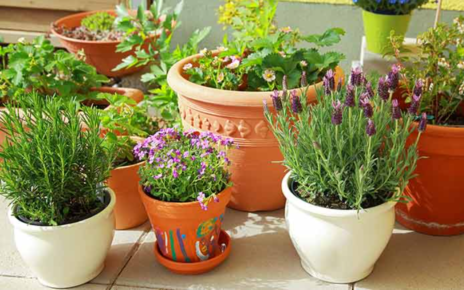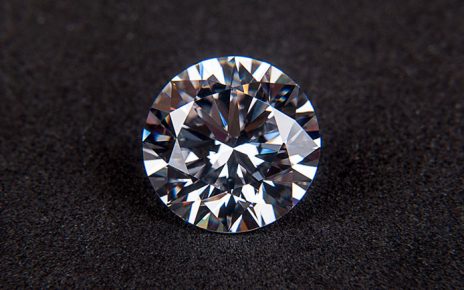After the laid tiling acquires the initial degree of adhesion (approximately you should wait 1 day), you need to process the inter-seam areas. For these purposes, grout is used.
Tiling Grout’s functions are:
a) presentable design of the seams because the wall or floor lined with voids does not look at all aesthetically pleasing;
b) creating a waterproof layer that prevents moisture from penetrating the rough surface. An additional hydraulic barrier will be very useful so that in a few years you will not think about changing the finish in the bathroom or in the kitchen;
c) preventing the ingress of dirt, dust, cobwebs in the inter-tiling space. Walls get dirty less, and floors get a larger portion of dirt;
d) preventing the appearance of mold or the appearance of microorganisms. Grouting the tiling will help to reduce humidity in the bathroom and kitchen in the end zone of the piece material. These joints are easy to keep clean and dry.
Manufacturers make mixtures in the form of a dry powder, paste, or a two-piece kit. The seam holes are filled with a rubber spatula that does not scratch the surface of the finishing material. When everything is filled, smeared grout residues are removed from the tiling.
What are the parameters for choosing a fugue?
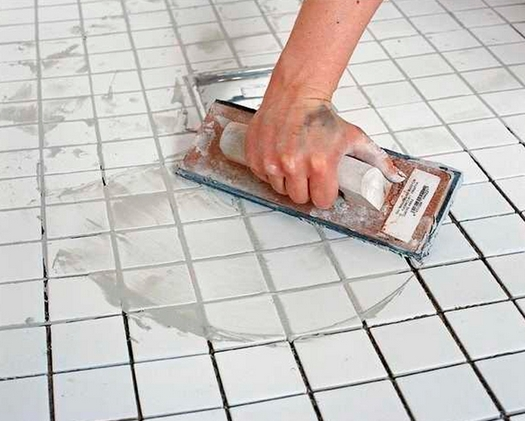
- Shade. Products are bought to match the tiling, if you like monochrome, you want to create a single picture that hides the mating points of piece elements. Another reason is the interesting decor pattern (for example, a beautiful mosaic is laid out ).
For finishing products in deep colors, you can choose a light contrast or a bright analog. There is an unspoken rule according to which a simpler fugue is selected for an expensive floor covering.
Adding glitter tiling to the grout is appropriate if the tone of the finish is uniform, and there are no decorative borders. This technique looks especially impressive with chocolate, black, wet asphalt, emerald, dark purple decor.
2. Composition. To make the grout work well, latex, fillers, additives are added to them, capable of homogenizing the mixture and improving its properties. Let’s consider 3 types of compositions.
Cement-based. Inexpensive, designed to fill a joint approximately 0.5 mm wide. Not always comfortable due to moisture absorption, low elasticity, and ability to shrink. It is advisable to abandon the cement grout on the walls and apron zone of the kitchen, as they are able to absorb fat splashing when cooking. Suitable more for living rooms, bedrooms, children’s rooms.
Based on polyurethane. They consist of water-dispersed resins, they fill the intended space well, they are easy to grind. They are ready to use and allow you to change the color when added to the mixture of pigmented sand. Relatively expensive, they do not cope well with wide seams (suitable for filling 4-6 mm in width). They are quickly removed from the tiling surface.
Based on epoxy duo-composition, which includes resin and hardener. The solution is prepared in small portions in order to have time to use it up until it begins to rapidly lose its plasticity. Hydrophobicity, chemical, and ultraviolet resistance, thermal stability make it possible to buy an epoxy grout for tiling placed indoors and on the facade of the building. And it will last about 35-40 years.
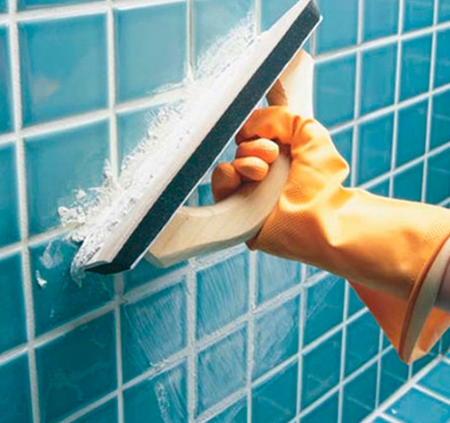
Latex-based. The best material for large joints, the size of which reaches 3 cm. It is most often used to seal the inter-tiling space on the street surface underfoot. The product excludes the appearance of cracks, withstands well loads on mechanical stress and a sharp change in temperature, does not deteriorate under the influence of the summer sun, excludes the penetration of water. The only inconvenience is the need to immediately wipe the tiling surface after grouting, otherwise, the clouding of the surface cannot be avoided.
Manufacturers of building materials regularly delight with useful news. If you cannot decide on the desired fugue tone or form a mosaic picture, use a chameleon product. Initially, it has a transparent color, but it is able to modulate a shade close to the material being laid.
PS For surfaces that require further use in difficult conditions, in contact with aggressive media, grout with furan resins, heat-resistant components, or silicone is suitable.
We do not recommend purchasing formulations that cost less than the average market price set on the product. They will begin to shrink and fall out of narrow seams. Wide inter-tiling spacing is usually left when laying porcelain stoneware. As for self-respecting companies, they add expensive components to the mixture, which significantly improve the quality of installation and the duration of use of the tiling grout. Such a product always indicates which seam size it fits.
Why is it advisable to perform styling with the formation of seams
The manufacturer always provides manufacturing tolerances. To choose the technology of tight abutment, you should have a finishing material with perfectly flat sides that have the same linear parameters in each piece of product. But even the cut ends do not guarantee full compliance with the dimensions, since the difference of 1 mm already significantly affects the quality of the next junction.
For rectified decor, the size of the joints is 1.5 mm on the wall and 2-3 mm on the floor. Conventional material needs a corresponding minimum of 2 mm and 3 mm. Where the surface has constant loads or is subject to vibration, add 0.5-1 mm to the selected joint size.
What you need to know before carrying out work
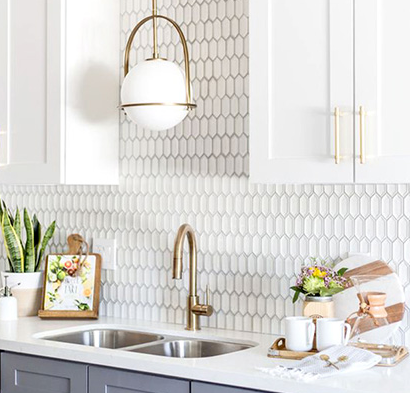
When tiling is installed, some of the adhesive remains on the surface. First you need to remove it, and then deal with the inter-tile seams. It is better to do this immediately, with each piece element, keeping a rag at hand.
The glue also gets into the seams, so the holes are made with a spatula. If you forget about it or leave it for later, the adhesive will harden and it will be quite difficult to remove it without damaging the tiling. When mixing the dry composition and distributing the mixture, use only washed and wiped tools. It is important that foreign inclusions do not get into the mixture, which can negatively affect the adhesion strength and even partially replace the initial tone of the fugue.
To simplify the work or to do everything as recommended? It is about kneading a mixture of dry ingredients ─ and doing it correctly by hand to make the product homogeneous. The drill will do the job faster, but the quick rotation of the nozzle will allow more air to flow into the mix, which will cause the tile grout to separate.
The mixing of the components is carried out in small batches so that the resulting fugue does not begin to harden or dry out until the moment of full use.
When using several shades of a piece of finishing material, take your time to buy a grout for tile joints in different colors. It will look clumsy and oversimplify the beauty of the decor.
Sealing in white is not the best solution for a floor. It pays off only when the finish is pure white. But even in this case, you need to look so that the thin strips do not turn gray during operation.
When washing the fugue that has got on the tiles, you need products without dyes. Colored detergents are capable of reacting with the inter-seam product, ruining the shade of the grout.
Not renovation, but renewal
To slightly modify the annoying tile decor, choose a different fugue color. As noted earlier, the contrast will give meaning to the piece elements, the maximum choice of grout according to the color of the tiles will form a monochrome vision of the finish, and the glitter elements will make the wall and floor decoration unique. You need to stock up on time, diligence, personal respiratory protection, and tools.
Another article on this blog that might interests you:



